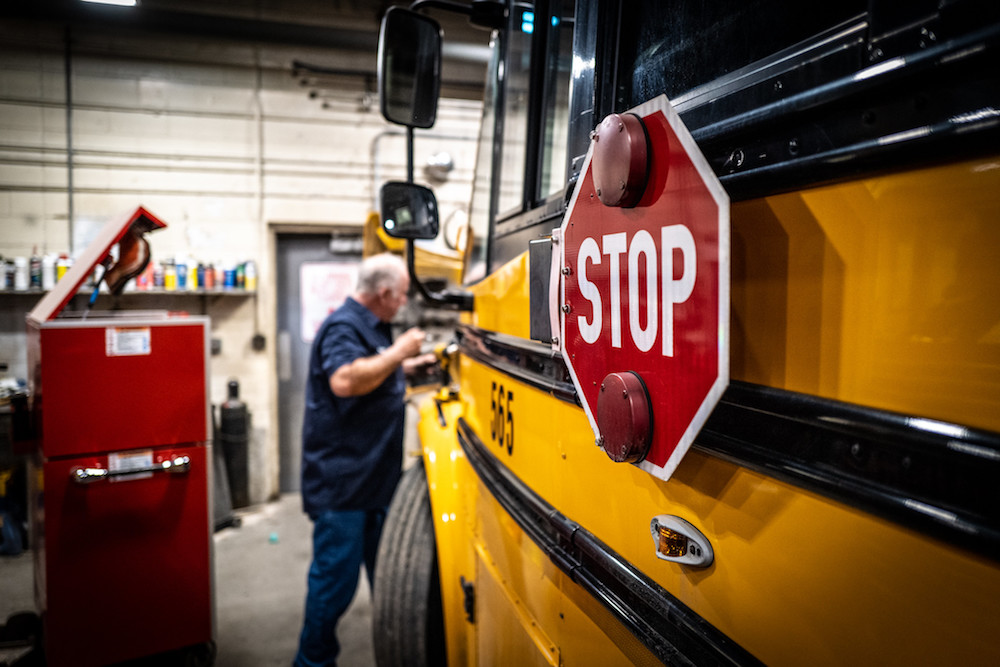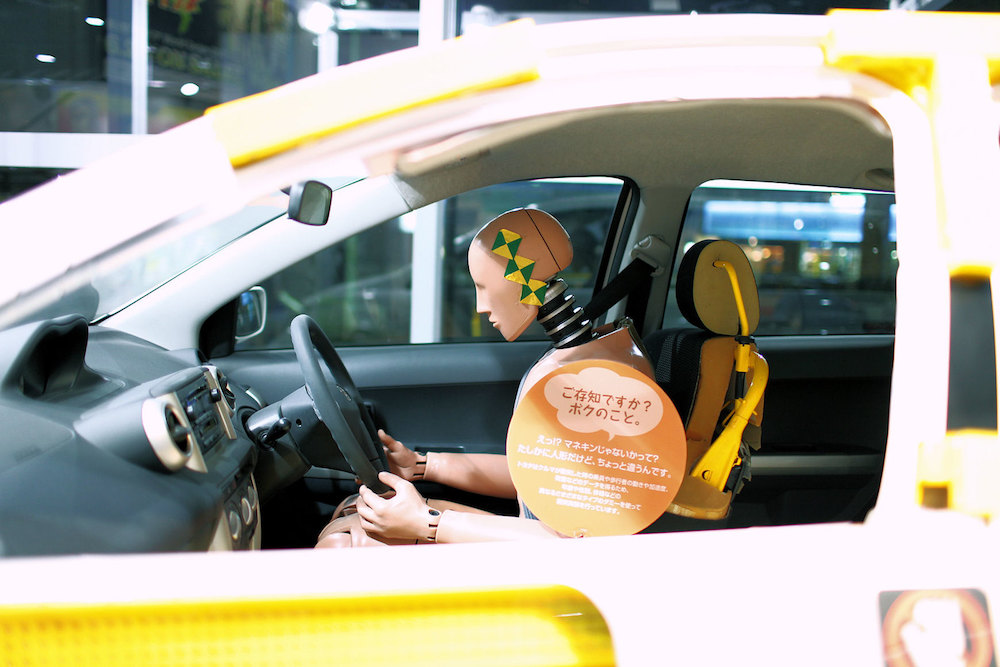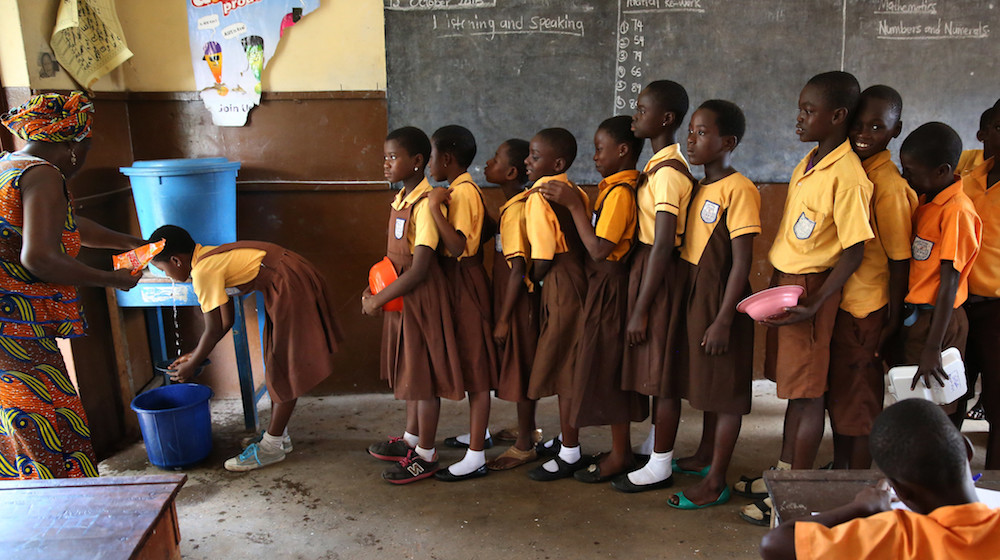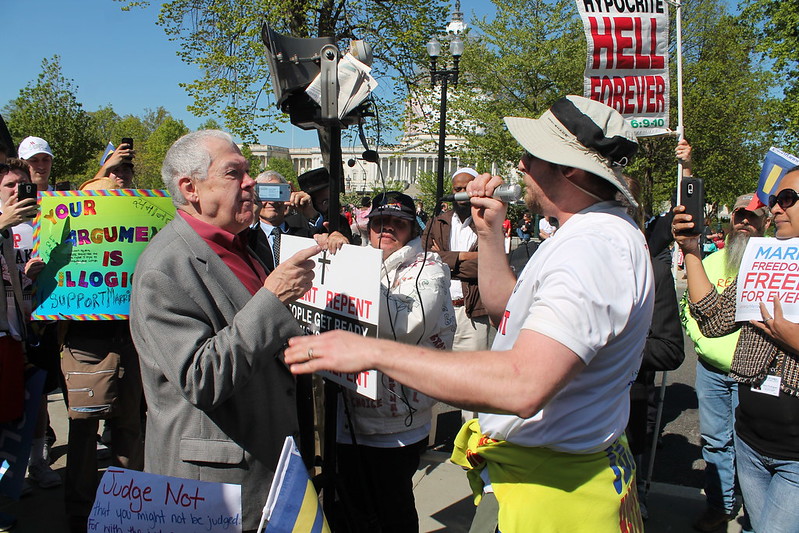The Problem of Imagining the Real
As the novel coronavirus sent China into lockdown, my wife and I started to carefully follow the news. China was far away, and it was hard to imagine that the scenes of overflowing hospitals and mass suffering could be replicated in our prosperous suburb of Washington, D.C., where residents were out enjoying an early spring. But as the virus swept through Europe, we read newspaper accounts, as well as the posts of a Facebook friend in Milan, about the heartbreaking chaos in Italian hospitals and then the lockdown of the entire country. We realized that we were almost certainly reading about life in American cities a few weeks out.
Our children’s middle and high schools began to seem discomfortingly similar to cruise ships: confined spaces where thousands of people cough, sneeze, and touch the same surfaces. We wrote to the superintendent of schools in the county of Maryland, where we live, begging him to close the schools before they became coronavirus petri dishes. We got no reply. We also wrote to the principals and parent-teacher association officers of our kids’ schools. When we did receive replies, they were mostly officious, evasive, or replete with formulaic reassurances. On the evening of Tuesday, March 10—a day before the World Health Organization declared a pandemic—we decided to pull our two kids out of their schools.
My wife and I naively expected that our kids would be delighted not to have to get up at 6:30 a.m. to sit through classes that, they had complained to us over dinner every night, were often excruciatingly boring. Instead, they were furious. They told us to look around: There were no coronavirus cases where we lived. We were paranoid. We had humiliated them among their friends.
Just two days later, on Thursday, March 12, the governor of Maryland announced that the schools would be closed as of the next week. Suddenly, our kids were fine with our decision. They were like all the other kids again.
Human beings are very good at using their senses to detect threats in their immediate environment. The animal growl in the dark, the shark’s fin in the water, the burly man following too closely on a dark street at night, the putrid smell of rotten meat—these all excite immediate protective responses. That is how humans are wired.
Humans are not so good at being aware of more abstract threats, even though they are often far more serious. Nuclear weapons that might extinguish all human life are only witnessed through the occasional newspaper articles or movie references. Climate change, which threatens to kill and dislocate millions, is hard to discern in the ebbs and flows of daily weather. And who outside the rarified world of finance can understand the dangers of an over-leveraged banking system, like the one that cost 10 million Americans their homes in the 2007–2009 recession?
As social psychologist Robert Jay Lifton put it, nuclear weapons and other abstract threats pose the challenge of “imagining the real.” How do we make an abstract or remote danger seem compellingly present, as if it were a shark’s fin a few yards away?
This is one of the challenges posed by COVID-19—especially in the politically fractured environment of the United States, where everything from gender pronouns to trade policy is deeply contested, and a collective imagination of risk seems out of reach.
The virus causing today’s pandemic is as perfectly optimized to exploit weaknesses in our system of social perception as in our respiratory system.
It is hard to grasp the lethality of something we cannot see or to see as dangerous things that we have learned over many years to see as benign: a friendly handshake, a shopping cart handle, elevator buttons, the box left on our doorstep by UPS. One study from Iceland (the country that has done the most testing) suggests that as many as 50 percent of those infected may show no symptoms. It is hard to recognize that people who look perfectly healthy could be infectious—or, indeed, that we ourselves could infect others despite feeling healthy. A disease that takes five to 14 days to incubate and infects others before symptoms appear confuses our ability to connect cause and effect. Its exponential rate of increase plays havoc with our sense of the constancy of time.
My wife and I directly experienced the struggle to imagine the real as our kids chafed against being locked down in our house, banned from seeing their friends in the flesh. They kept protesting that their friends were perfectly healthy, that normal people were still going out. A friend told us she was allowing her 18 year old to spend time with other 18 year olds because they were close friends, so she knew they did not have the virus. This statement, based on a false sense of trust, would horrify an epidemiologist.
A teacher at a school near my kids’ developed symptoms of coronavirus the day Maryland’s governor ordered the schools closed. He had no idea how he had become infected. At the time of writing, he is in a coma.
It is quite possible for humans to recognize new threats, even if those dangers at first seem abstract, and to change behaviors that have become deeply embedded in their personal lives.
From 1965 to 2014, the proportion of U.S. adults who smoked fell from about 42 percent to just under 17 percent. Since it became mandatory for new cars in the U.S. to be fitted with seatbelts in 1968, about 90 percent of people got into the habit of wearing them, and this behavior saves 15,000 lives a year on U.S. roads. In the 1980s, as people began to understand how AIDS was transmitted, the number of single people using condoms increased markedly.
I should add that it is also possible to conjure mass belief in threats that are not just imagined, but imaginary. Thus, in 2003, the administration of then-U.S. President George W. Bush was able to incite the majority of the American people to believe in, and to feel imminently threatened by, nonexistent Iraqi weapons of mass destruction, and to support a war to eliminate these phantasms of the collective American imagination in which over 4,500 U.S. soldiers (and countless more Iraqis) died.
Shifting the public’s risk perception usually takes hard work by many different kinds of people converging on a common point. Driving down smoking rates in Western countries has required years of messaging from doctors, public health experts, politicians, journalists, movie stars, and peers. Advertising campaigns and opinion leaders were vital in persuading people not only that smoking was dangerous but also, more viscerally, that it was uncool, or “low class,” or disgusting.
In the end, invoking disgust and taking advantage of conformist instincts may work better at changing behavior than fact-based educational messaging. This lesson is illustrated by the work of anthropologist Valerie Curtis, who was determined to save Ghanaian children from lethal diarrhea by getting them to wash their hands with soap. She found that public health campaigns were ineffective, so she partnered with Procter & Gamble, Colgate-Palmolive, and Unilever in an advertising campaign to help Ghanaians associate toilets with disgust and soap use with sophistication. The campaign was a success for the same reason that my kids felt better about staying out of school once their friends were doing the same: It invoked cultural herd behavior.
Occasionally, changes in risk perception can be engineered from below. Almost all Czechs now wear face masks amid the coronavirus crisis because of an extraordinary grassroots movement that has incited mass home-manufacture of masks that are left on trees for anyone to take. The movement, whose slogan is “my mask protects you; your mask protects me,” has, in just a few weeks, made those who do not wear masks appear selfish and antisocial. Young musicians in Africa are mounting a similar campaign around mask wearing and handwashing.
But the state may be the most powerful actor when it comes to imagining the real. In a country like China, where the state controls almost all channels of public discourse, it is easy to saturate a population with powerful and consistent messaging (backed by the threat of incarceration). This enabled China to “flatten the curve” of its coronavirus epidemic in three to four weeks. Most European countries, although less authoritarian, have managed to saturate public discourse in a similar way because there has been a strong consensus among public health experts and politicians. In all these cases, hundreds of millions of people have, in the space of a few weeks, learned together to visualize an invisible threat and to reorganize their lives in enormously costly and painful ways to defeat it.
It is not thus in the United States. The U.S. is so profoundly fractured politically that its public health experts, politicians, and other opinion leaders have been unable to achieve the same consensual messaging that we have seen in both authoritarian and democratic societies in Asia and Europe. U.S. public health experts, Democratic presidential candidates, and many state governors have advocated or imposed extreme social distancing, while some Republican politicians, right-wing pundits, Fox News personalities, and preachers—encouraged especially by President Donald Trump’s early reactions to the pandemic—have called the virus a liberal “hoax.” Democrats and Republicans continue to hold very different views of the virus and their country’s reaction to it. This fracturing of the public imagination in the United States will surely cause many unnecessary deaths.
The media inquest into the calamitously inadequate U.S. response to the epidemic is already underway. Blame is being apportioned to organizational disarray in the White House, Trump’s psychological inadequacies, poor leadership at the Centers for Disease Control and Prevention, and the decentralized structure of the U.S. political system.
But if we want to understand what has gone wrong, we should also look at the failure of collective imagination in the United States—the problem of imagining the real. It is hard to mobilize to defeat threats we cannot imagine together. It will be hard to “flatten the curve” if some states adopt intense social distancing but others stay open for business as usual, if some politicians model social distancing while others mock them for it, and if public health experts tell us to stay home, but preachers tell us to fill the churches because God will not allow the virus to infect us.
The grueling campaign to defeat the virus will demand great sacrifices from everyone, and those sacrifices will be easier if we share a common perception of the threat.





































